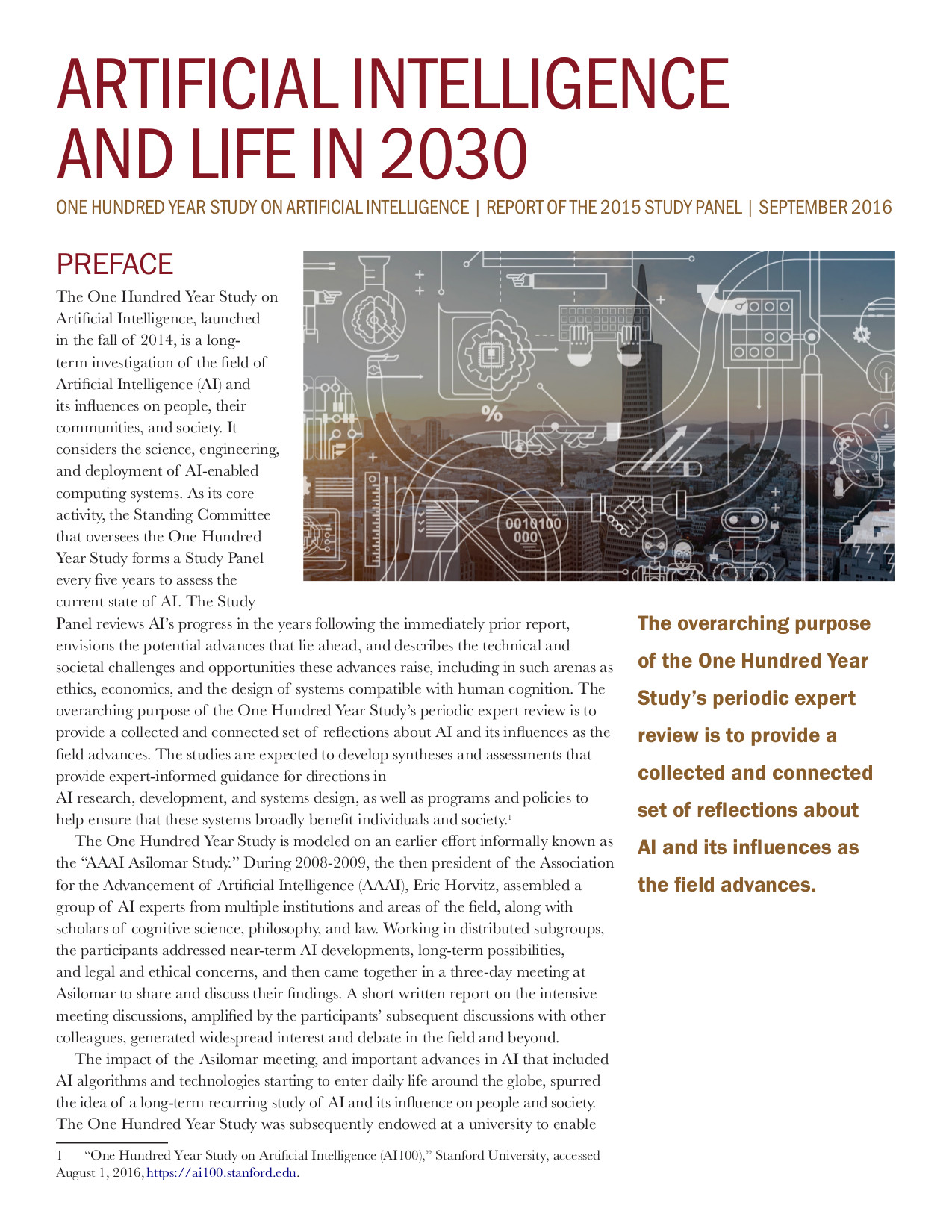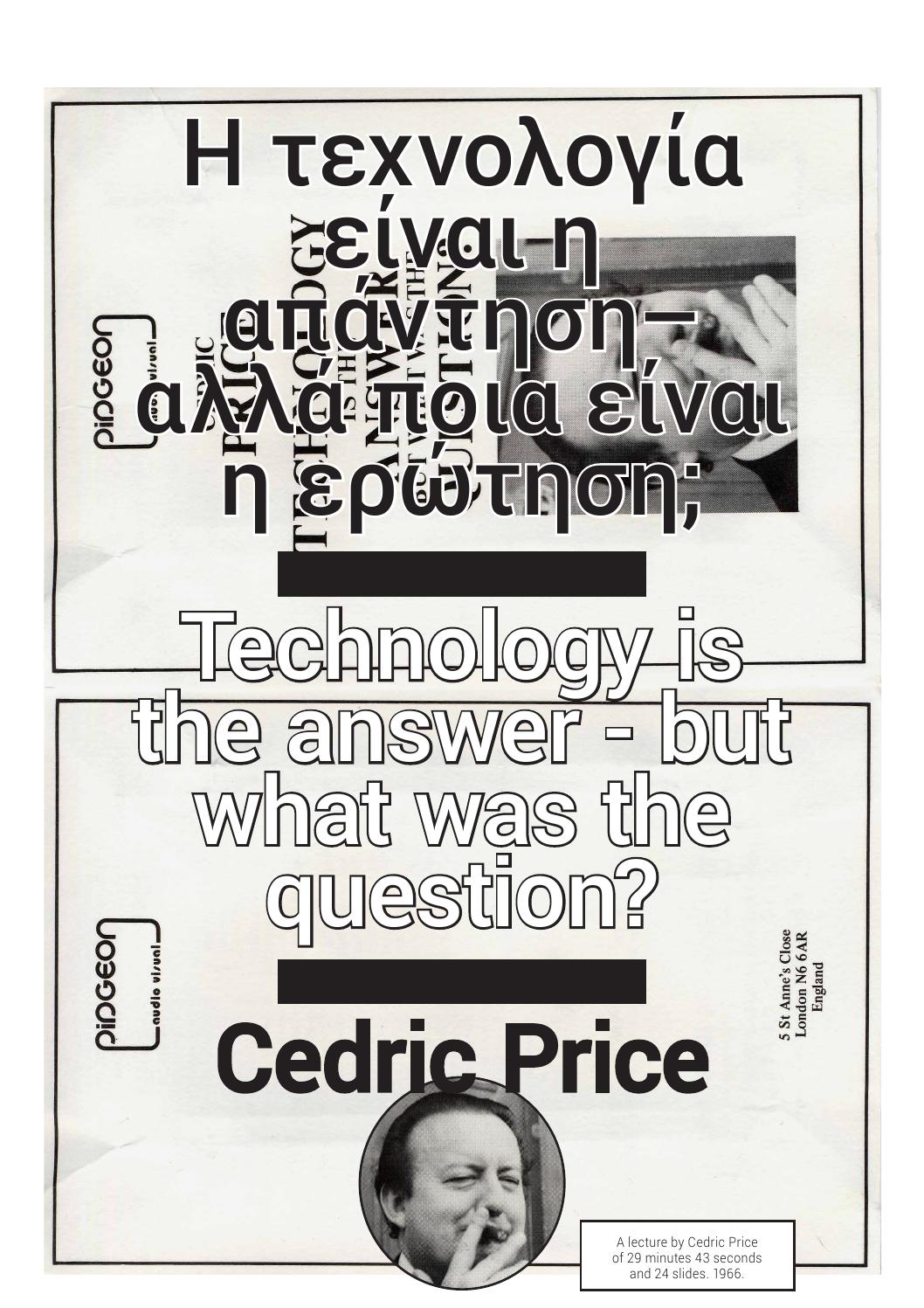Jonathan Benthall: Science and Technology in Art Today (1972)
Filed under book | Tags: · art and science, art criticism, computer art, computing, holography, kinetic art, media art, photography, technology

An early treatise on art, science and technology based on the series of articles written for Studio International.
Publisher Praeger, New York, 1972
180 pages
Review: John H. Holloway (Leonardo, 1975).
PDF (46 MB)
See also Jonathan Bentham’s Technological Art and Studio International‘s Eclectic Vanguardism, 2017.
Artificial Intelligence and Life in 2030: One Hundred Year Study on Artificial Intelligence (2016)
Filed under report | Tags: · artificial intelligence, computing, industry, machine learning, society, technology

“The Stanford One Hundred Year Study on Artificial Intelligence, a project that launched in December 2014, is designed to be a century-long periodic assessment of the field of Artificial Intelligence (AI) and its influences on people, their communities, and society. Colloquially referred to as “AI100″, the project issued its first report in September 2016. A Standing Committee works with the Stanford Faculty Director of AI100 in overseeing the project and designing its activities. A little more than two years after the first report appeared, we reflect on the decisions made in shaping it, the process that produced it, its major conclusions, and reactions subsequent to its release.
The inaugural AI100 report, which is titled “Artificial Intelligence and Life in 2030,” examines eight domains of human activity in which AI technologies are already starting to affect urban life. In scope, it encompasses domains with emerging products enabled by AI methods and ones raising concerns about technological impact generated by potential AI – enabled systems. The Study Panel members who authored the report and the AI100 Standing Committee, which is the body that directs the AI100 project, intend for it to act as a catalyst, spurring conversations on how we as a society might shape and share the potentially powerful technologies that AI could enable. In addition to influencing researchers and guiding decisions in industry and governments, the report aims to provide the general public with a scientifically and technologically accurate portrayal of the current state of AI and its potential. It aspires to replace conceptions rooted in science fiction books and movies with a realistic foundation for these deliberations.”
Publisher Stanford University, September 2016
Creative Commons BY-ND 4.0 International License
52 pages
Commentary: Barbara J. Grosz & Peter Stone (Communications of the ACM, 2018).
Comment (0)Cedric Price: Technology Is the Answer, but What Was the Question? (1966/2015) [English/Greek]
Filed under booklet | Tags: · architecture, technology

““Technology is defined in the Oxford dictionary as the science of industrial art.” Cedric Price affirmed in 1966 at the beginning of his lecture entitled ‘Technology is the answer, but what was the question?’. The lecture speaks about the Fun Palace, the transdisciplinary cultural centre that Price designed in 1960 for Joan Littlewood.
The Fun Palace, which was never realised, is emblematic of our own era. It lends itself more to the choreography of 21st century time-based exhibitions than to the object- based displays of the 20th century; it fosters a more communal experience, largely free to operate outside its material limits, and ventures into other realms of human experience. In Price’s own words, “a 21st century museum will utilize calculated uncertainty and conscious incompleteness to produce a catalyst for invigorating change whilst always producing the harvest of the quiet eye”.”
With an Introduction by Lorenza Baroncelli
Published 2015
[43] pages

